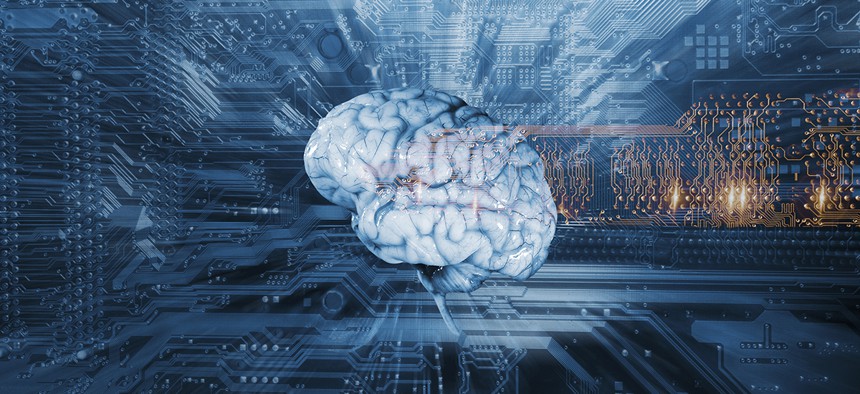IARPA Wants Smarter Algorithms -- Not More of Them

Christian Lagerek/Shutterstock.com
Program Director Jacob Vogelstein told Nextgov why IARPA is investing in new training for AI systems.
Last month, the intelligence community’s research arm requested information about training resources that could help artificially intelligent systems get smarter.
It’s more than an effort to build new, more sophisticated algorithms. The Intelligence Advanced Research Projects Activity could actually save money by refining existing algorithms that have been previously discarded by subjecting them to more rigorous training.
Nextgov spoke with Jacob Vogelstein, a program manager at IARPA who specializes in in applied neuroscience, about the program. This conversation has been edited for length and clarity.
NG: What kind of training resources are you looking for?
JV: What we’re really looking for is new training resources that don’t exist right now. To do more interesting artificial intelligence, a lot of the state of the art systems require an interactive simulation environment.
If you’re teaching a robot to walk up stairs, if you’re trying to use a machine learning approach, you want to have a physics engine that allows for a simulated robot to control its motors in different ways and perceive how hard its foot is pressing against the stair, and how high its joints are raised. And then, if it gets off balance, have the physics engine simulate its falling in different ways. With that continuous interactive feedback, you’re going to have a machine-learning approach to control a robot, as opposed to programming it with a set of rules to say, “pick up your foot” or “set it down.”
Some of them can be fully automated, like that robot example. Some of them can be semi-automated, where, for example, you may have a crowdsourced step. If you want a system to look at data and make hypotheses, perhaps you want to provide it with a big database and then have it generate questions and have people vote on the quality of those questions and then vote on the quality of the answers.
NG: What’s the impetus for this RFI?
JV: There are a large number of algorithms that have been created that have laid in the shadows for many years, where people thought the algorithm weren’t powerful enough to do “interesting things” like analyze data or make hypotheses or answer questions or train a robot.
For IARPA, as we’re deciding how to make our investments, and for me as a program manager, I’m deciding where to make investments in new programs to advance machine-learning research. It’s interesting to consider whether the money is better spent on the math of building new algorithms or really on assembling better data sets and putting together large computing resources to exploit those data sets using existing algorithms.
NG: What kinds of AI projects is IARPA working on?
JV: There’s a program called Janus. a program on facial recognition. I have a program called MICrONS [Machine Intelligence from Cortical Networks], where we’re trying to look at brain-derived algorithms. It’s looking at reverse engineering the brain to identify what algorithms the brain uses for learning and intelligence. Then, there’s a host of new programs -- there’s Babel, which is a speech recognition program, and Aladdin, a video recognition program.
NG: Why is IARPA looking into this now?
There’s really been a number of publications in the scientific literature that have just illustrated that old algorithms with more data and bigger computers work fine for problems that we once thought were intractable.
(Image via Christian Lagerek/Shutterstock.com)


